THE EYES HAVE IT

For thousands of years the eye has maintained a fixed hold on human imagination. From the Eye of Horus to the modern Nazar charms so popular today, the eye has remained a very potent symbol.
Throughout antiquity when it came to warding off evil and malevolent forces, there was no symbol more recognised than the ‘evil eye’. The evil eye is a superstitious curse believed to be cast by a malevolent glare, which is usually inflicted on a person when they are unaware.
The evil eye was a popular theme in Ancient Greek literature with over 100 ancient texts mentioning the mati, (μάτι). One of the most notable examples is Plutarch’s ‘scientific’ explanation, which proposes that the human eye was the chief, if not sole, source of ‘deadly rays’ that could spring up like poisoned darts and were in some cases potent enough to kill children (Moralia, VII).
With such a passionate, widespread and quite terrifying belief that a simple stare could cause such misfortune or injury, it is no surprise that ancient civilisations sought means to repel it. The means by which they did so is to use amulets in the form of exactly that which they feared so greatly, the eye.
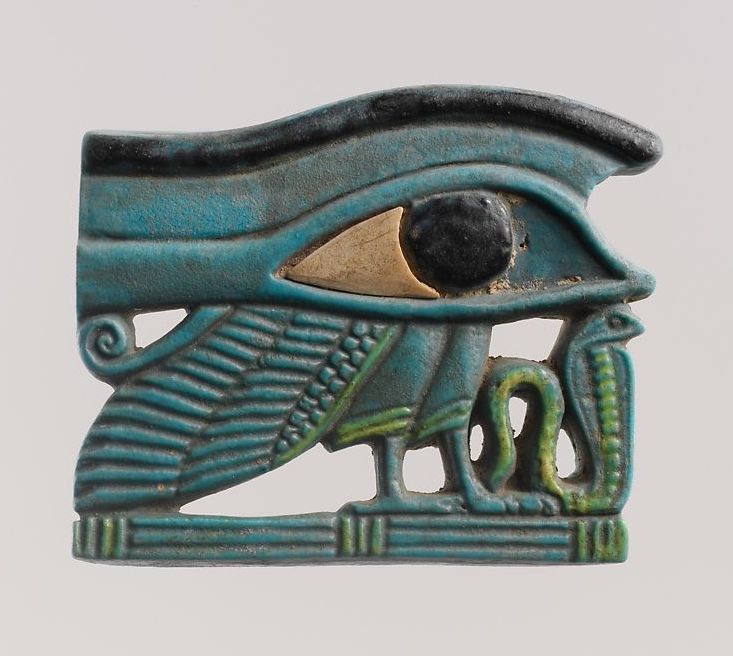
Some of the earliest eye amulets come from ancient Egypt, such as this faience Wedjat eye amulet
The Metropolitan Museum of Art, New York,inv. no.17.190.1639.
Third Intermediate Period, circa 1070–664 BC
One of the most popular, and I think charming talismans created to protect against the evil eye were glass core-formed eye beads originating from the Eastern Mediterranean.

A PHOENICIAN GLASS CORE-FORMED EYE BEAD
Eastern Mediterranean, circa 5th-3rd Century BC
Height: 2.6 cm approx.
Kallos Gallery
£2,000
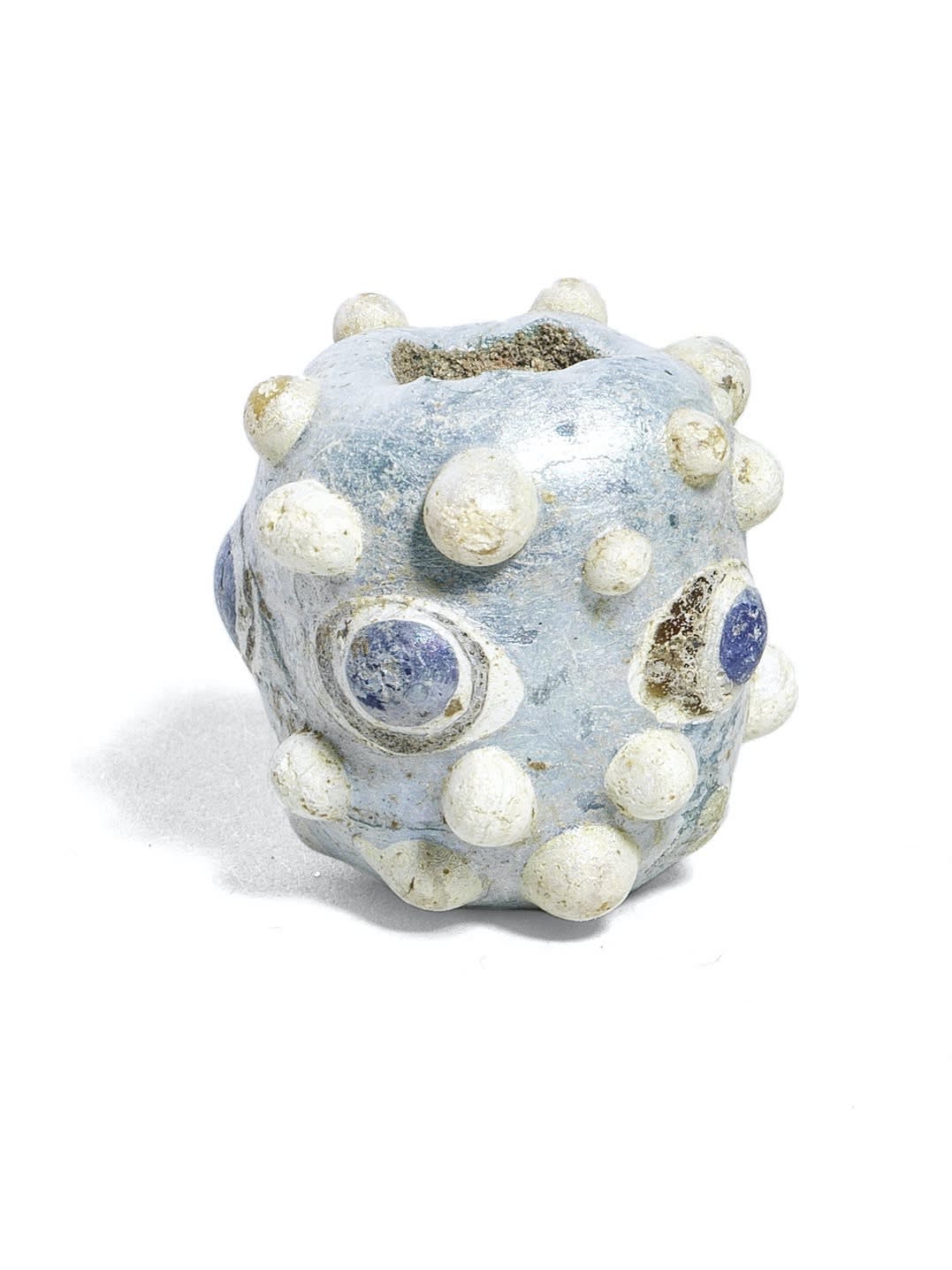
A PHOENICIAN GLASS CORE-FORMED EYE BEAD
Eastern Mediterranean, circa 5th-3rd Century BC
Height: 2.5 cm approx.
Kallos Gallery
£1,500
These so-called Phoenician (or Carthaginian) glass eye beads were used throughout the Mediterranean between the 7th – 3rd centuries BC, predominantly as protective amulets used to ward off evil. They became important apotropaic (to avert evil, from the Greek αποτρέπειν ‘to ward off’) devices that were worn in a manner of different ways, such as on necklaces and were even sewn into layers of clothing.
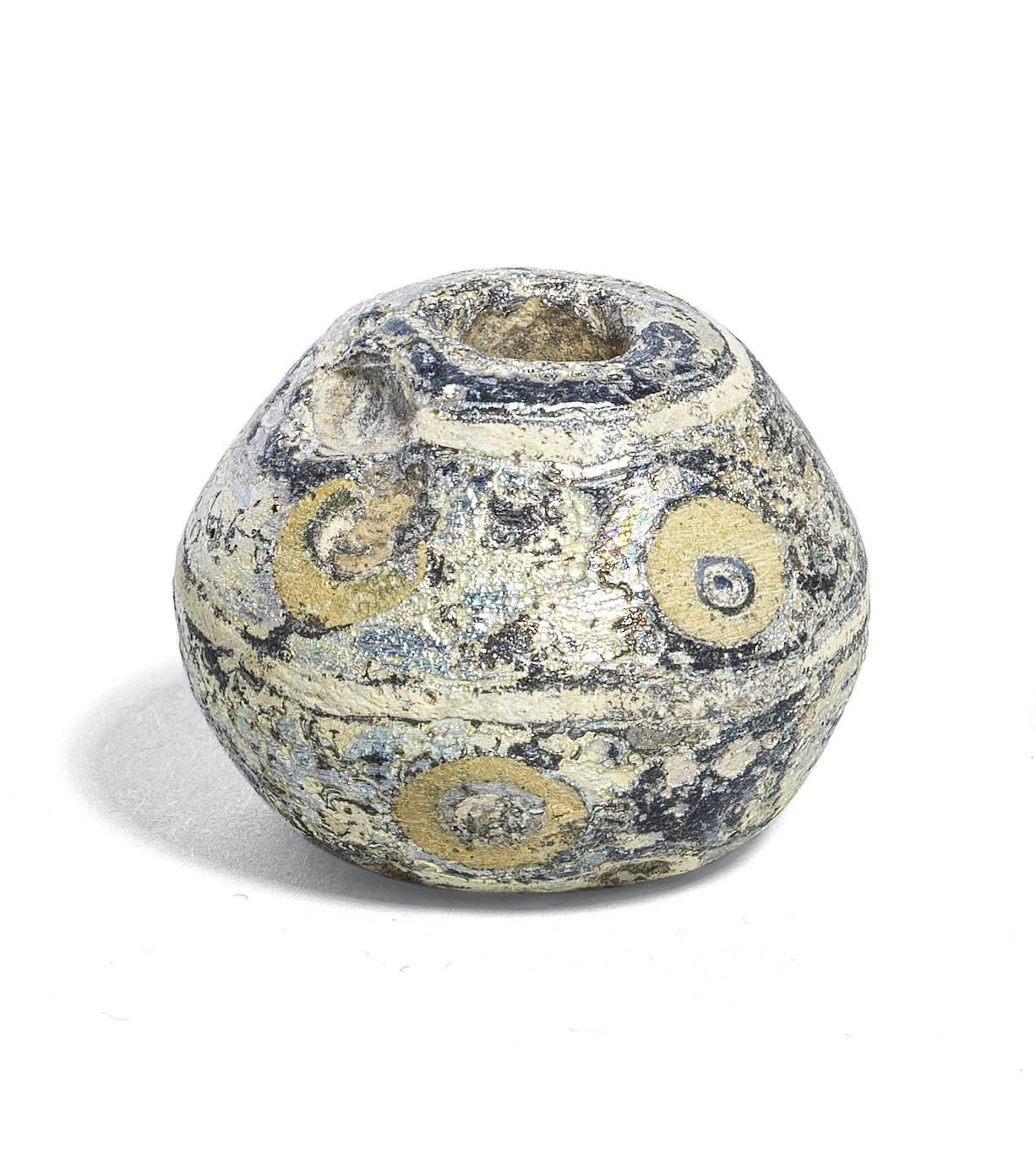
A PHOENICIAN GLASS CORE-FORMED EYE BEAD
Eastern Mediterranean, circa 5th-3rd Century BC
Height: 2.2 cm
Kallos Gallery
£700
The eye on the majority of these little amulets was depicted in blue. During antiquity it was believed that blue-eyed people were the most adept at delivering the curse of the evil eye. Aristotle warns in De generatione animalium and Physiognomonica against people with blue eyes and says that they should be avoided at all costs! It is for this reason that protective charms depicted blue eyes as a way of repelling the evil eye. Blue eyes can’t curse you if they are staring back at blue eyes.
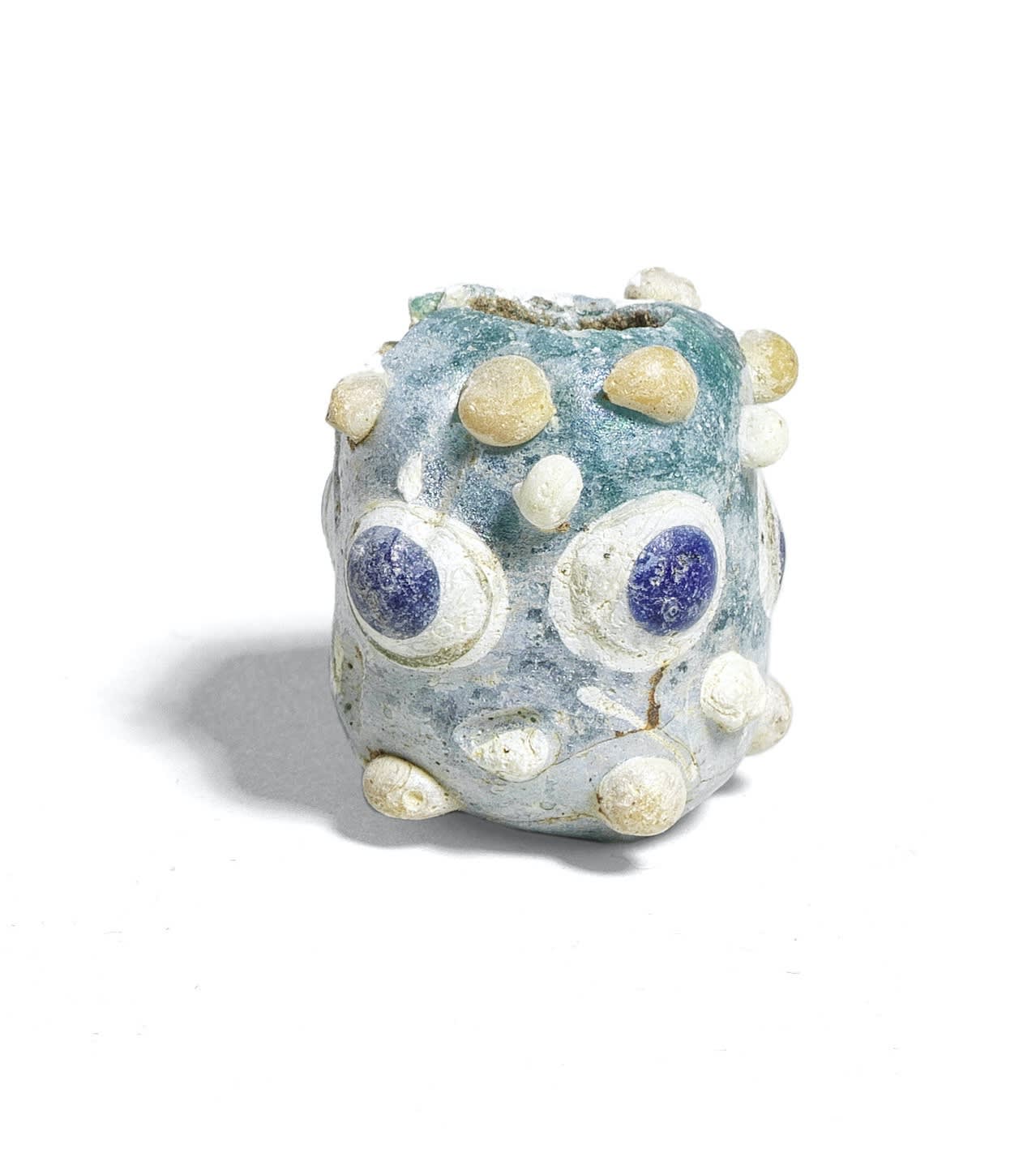
A PHOENICIAN GLASS CORE-FORMED EYE BEAD
Eastern Mediterranean, circa 5th-3rd Century BC
Height: 2.5 cm approx.
Kallos Gallery
£1,500
One of the earliest apotropaic devices in Ancient Greece, was the Gorgoneia, amulets that depicted the head of the Gorgon. Because of their powerful and legendary gaze that could turn one into stone, images of Gorgons were used to decorate buildings and objects for protection.
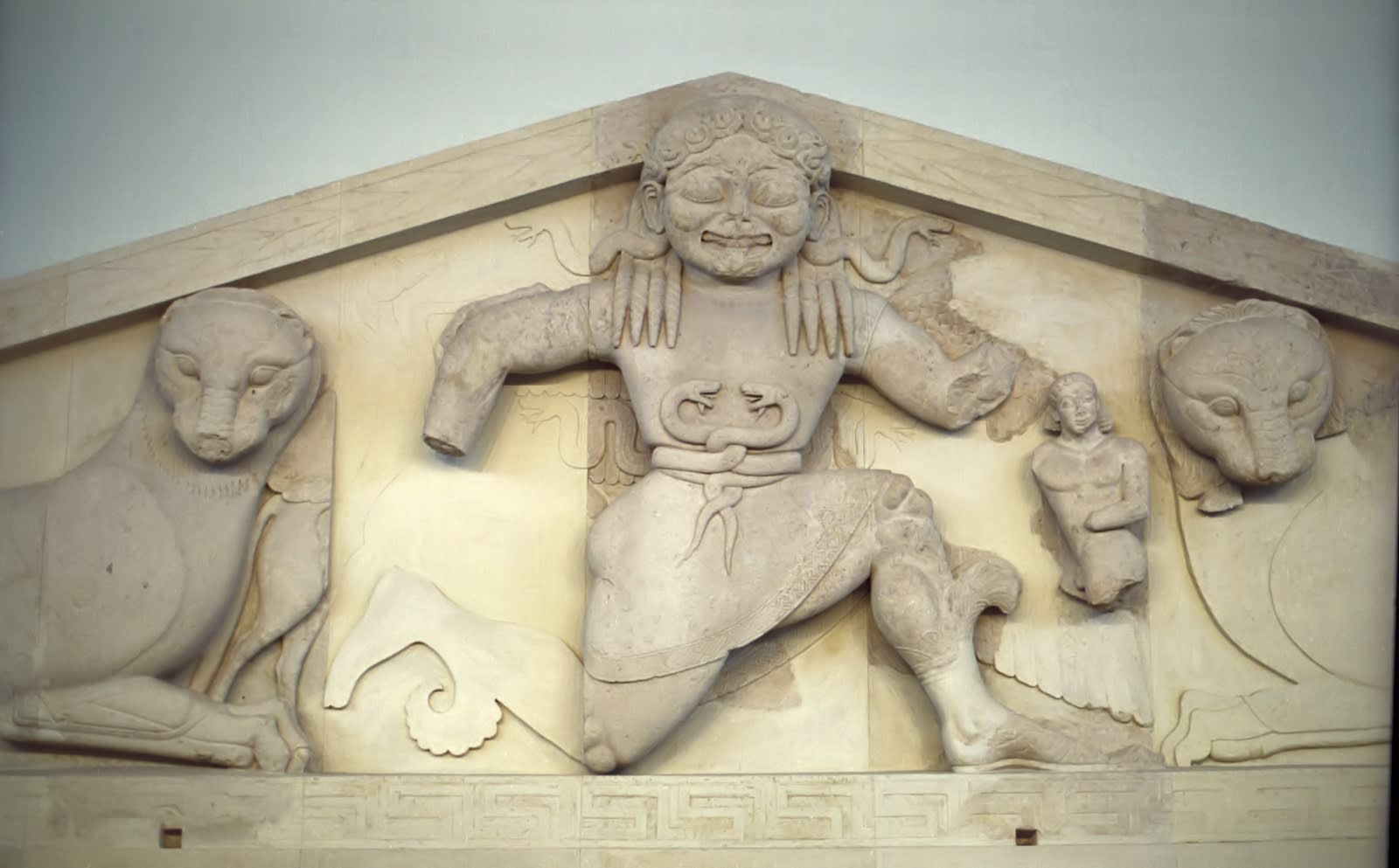
West pediment from the Temple of Aretmis, Corfu
Circa 580 BC
CC 4.0
One of the earliest, and perhaps the most spectacular example in Classical sculpture, is from the Temple of Artemis on Corfu, where a terrifying image of the Gorgon is depicted flanked by two leopards.

INTERIOR OF AN ATTIC BLACK-FIGURE EYE-CUP
Circa 525 - 500 BC
Width: 32 cm including handles
£28,000
Kallos Gallery
During the 6th century BC images of the Gorgon were often painted on the inside of drinking vessels, in particular the kylix. Not only does the below kylix depict the Gorgon, it also features a pair of large dominating eyes painted on either side of the exterior of the cup. This type of drinking vessel is commonly known as an ‘eye-cup’ and was designed for use at the symposium.

AN ATTIC BLACK-FIGURE EYE-CUP
Circa 525 - 500 BC
Width: 32 cm including handles
£28,000
Kallos Gallery
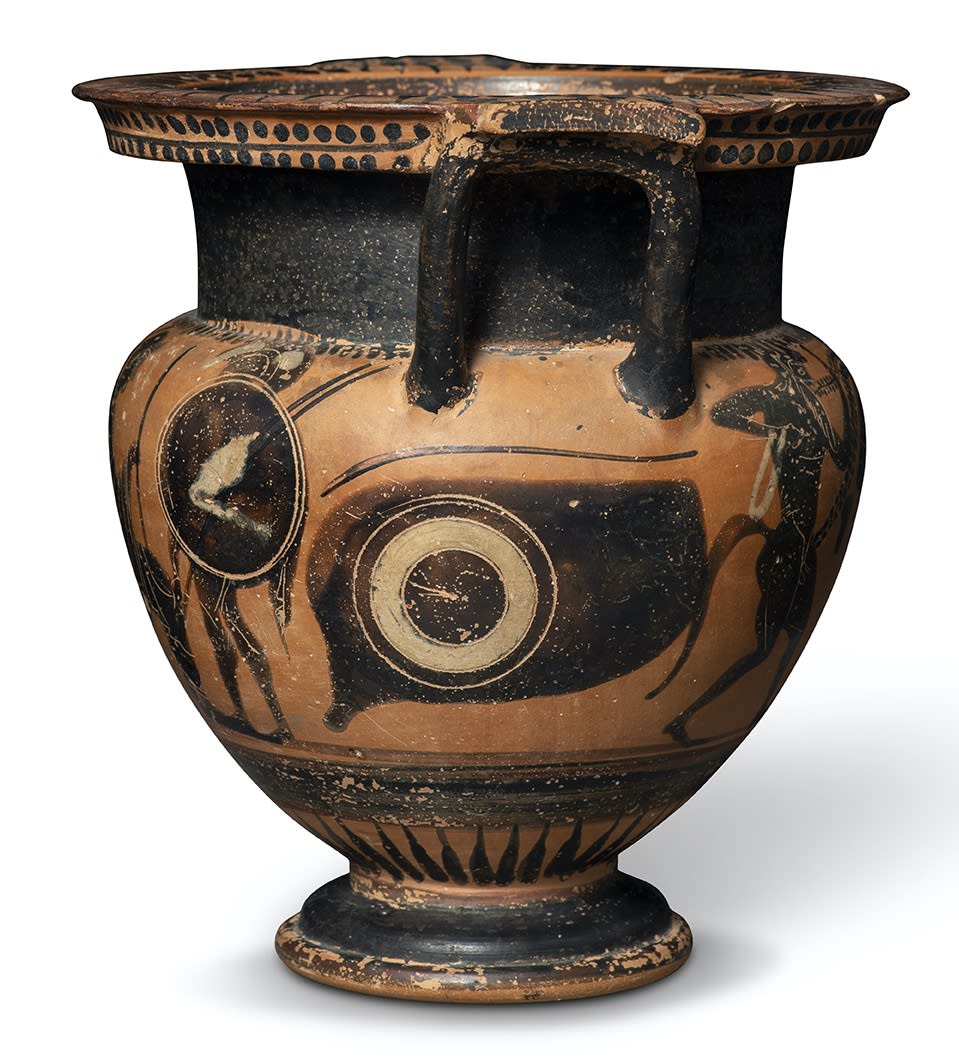
AN ATTIC BLACK-FIGURE COLUMN KRATER, ATTRIBUTED TO THE MIKRA KARABURUN GROUP
Early 5th century BC
Height: 20.5 cm
£11,000
Kallos Gallery
It is thought that the eye motif was first introduced by the renowned vase painter Exekias, and his infamous Dionysus cup. The primary function of the painted eyes was of course apotropaic; as the drinker raised the vessel the exaggerated eyes would protect them from evil spirits, and also perhaps from the envious gaze of other guests. Eye-cups were not just protective talismans however, as they transformed into a mask when the drinker raised it to his lips, keeping guard over the drinker even when their vision became impaired.